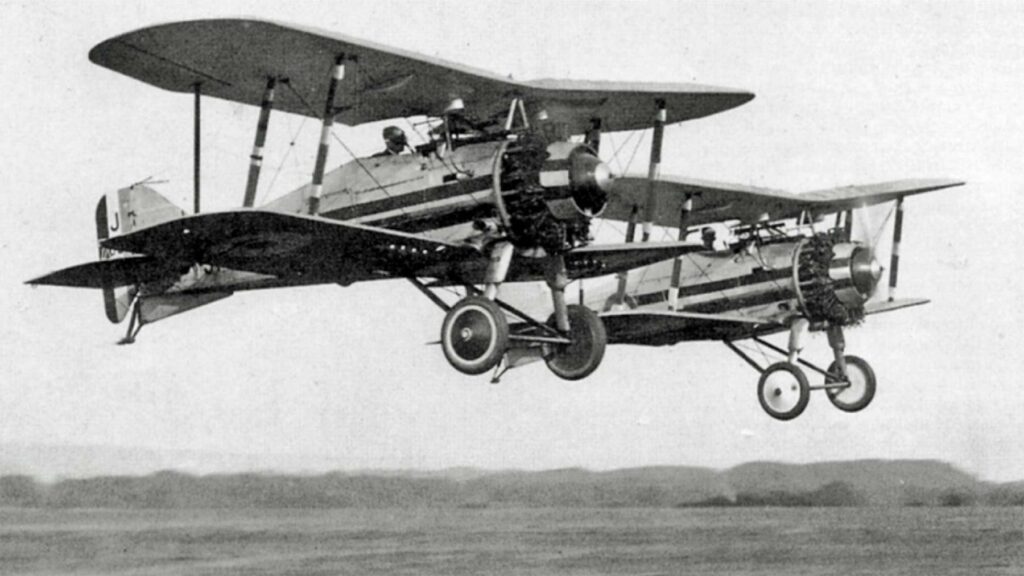The Gloster Grebe, an early RAF biplane fighter, featured a Jupiter IV engine, known for its maneuverability and robust construction in the 1920s. This article provides an in-depth look at the Gloster Grebe, an influential fighter aircraft of the early 20th century. It covers the historical context of its development, design specifics, performance metrics, military application, and its role in the evolution of fighter aircraft design.
The Gloster Grebe holds a significant place in the history of military aviation. As a fighter aircraft of the British Royal Air Force (RAF), it marked the transition from World War I designs to more advanced interwar period aircraft. This article explores the Grebe’s development, design, performance, and operational history.
History of the Development of the Gloster Grebe:
Developed in the aftermath of World War I, the Gloster Grebe was born in a time of rapid technological advancements and shifting military needs. Post-war, there was a pressing demand for more advanced and reliable fighter aircraft, leading to the development of the Grebe.
The Grebe’s development was initiated by the Gloster Aircraft Company, with Henry Folland, the chief designer, playing a pivotal role. The program began in the early 1920s, aiming to replace the aging Sopwith Snipe, which had been the mainstay of the RAF during the latter part of the war.
The first flight of the Gloster Grebe occurred in 1923. The aircraft was designed to meet the RAF’s need for a fast, agile, and reliable fighter, capable of superior performance compared to its World War I predecessors. The objective was to create a platform that would ensure air superiority in a period marked by significant advancements in aviation technology and changing military doctrines.
Design of the Gloster Grebe:
The design of the Gloster Grebe was a reflection of the transitional phase in fighter aircraft development during the early 1920s. It was a single-seat biplane with a wingspan of 30 feet (9.14 meters) and a length of 20 feet (6.10 meters). The aircraft utilized a mixed construction with a wooden frame and fabric covering, typical of the era.
Powered by a Bristol Jupiter IV radial engine, the Grebe was capable of delivering 425 horsepower (317 kW). This engine choice marked a significant improvement over the engines used during World War I, offering better performance and reliability.
The aircraft had an open cockpit, a fixed undercarriage, and was armed with two forward-firing Vickers machine guns. While the design was robust and provided excellent maneuverability, it faced limitations in terms of speed and altitude performance compared to later designs. However, the Grebe was instrumental in transitioning to more modern aircraft, influencing subsequent designs with its combination of a powerful radial engine and a maneuverable airframe.

Performance of the Gloster Grebe:
The performance of the Gloster Grebe was characterized by its agility and relatively good speed for its time. The Bristol Jupiter IV engine enabled a top speed of approximately 137 mph (220 km/h). The aircraft had a service ceiling of around 23,000 feet (7,010 meters) and a range of 300 miles (483 km).
When compared to contemporary aircraft like the American Boeing P-12 or the French Nieuport-Delage NiD 29, the Grebe was competitive in terms of maneuverability but lagged slightly in speed and altitude capabilities. Its robust construction and reliable engine, however, made it a favored aircraft among pilots for its time.
Military Use and Combat of the Gloster Grebe:
The Gloster Grebe was primarily used by the RAF. Its armament of two Vickers machine guns was standard for fighters of that era. While the Grebe did not see combat in major conflicts, as it was developed during a relatively peaceful period, it played a crucial role in the RAF during the interwar years.
The Grebe was used in various squadrons, where it was valued for its agility and reliability. It was not widely exported and remained mostly within the RAF’s inventory. The aircraft was eventually phased out and replaced by more advanced designs like the Gloster Gauntlet and the Gloster Gladiator in the late 1920s and early 1930s.
The Gloster Grebe stands as an important link between the World War I-era fighters and the more advanced aircraft of the late 1920s and 1930s. While it may not have been a revolutionary design, its contribution to the evolution of military aviation was significant. The Grebe’s development, operational service, and the transition it represented in fighter aircraft design highlight its important role in the annals of aviation history.
Back to the Warbirds section.